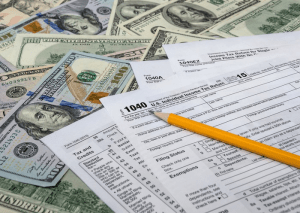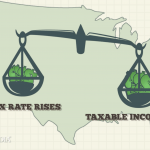
Each of these accounts helps to offset another account on the balance sheet. For instance, the allowance for doubtful accounts reduces the net amount of accounts receivable, while the reserve for obsolete inventory does the same for inventory. Similarly, accrued liabilities reduce the total amount of current liabilities. Including contra accounts on a balance sheet is important as it allows for a more transparent view of a company’s financial position. This is done by separating the decreases that have occurred in the contra account from the original transaction amount.
- Most accountants choose to record the depreciation over the useful life of an item in the accumulated depreciation contra asset account, which is a credit account.
- The difference between an asset’s account balance and the contra account balance is known as the book value.
- At the end of year 20, the car and the accumulated depreciation accounts will be written off from the balance sheet, as the car will be a fully depreciated asset.
- GAAP, the allowance for doubtful accounts represents management’s estimate of the percentage of “uncollectible” accounts receivable (i.e. the credit purchases from customers that are not expected to be paid).
- This would let users of the financial statements calculate the book value of the liability.
Note that the asset account balance represents the purchase price of the asset in question, also known as its historical cost. Although they all aim at reducing the balance of some type of account, it is useful to have some general foundational knowledge of the different types of accounts. A contra account is an account with a balance opposite the normal accounts in its category. Contra accounts are usually linked to specific accounts on the balance sheet and are reported as subtractions from these accounts. In other words, contra accounts are used to reduce normal accounts on the balance sheet.
At the end of year 20, the car and the accumulated depreciation accounts will be written off from the balance sheet, as the car will be a fully depreciated asset. For example, if the balance of accumulated depreciation increases from $20,000 to $50,000, this means that the depreciation expense amounts to $30,000, which will be listed in the income statement. You’ll continue to use the contra asset account until the equipment has been completely depreciated, retired, or sold.
Types of Contra Accounts – Explanation
Since liabilities are recorded with credit entries, contra liabilities show a debit balance. A contra liability acts more like an asset account because it is recorded as a debit and benefits the business’s bottom line by decreasing the liabilities. Examples of contra liability accounts include financing fees and original issue discounts (OID).
Bitcoin Hosting Service – Bitcoins Avanza – Indie Shuffle Music News
Bitcoin Hosting Service – Bitcoins Avanza.
Posted: Thu, 27 Jul 2023 22:27:37 GMT [source]
how to compile and use income statements are credited when these are increased and debited when these are decreased. There are generally two contra asset accounts used by companies that are an allowance for doubtful debts account and an accumulated depreciation account. The first time a contra asset account is recorded in a journal entry, it is to be deducted from the expense. For example, when the credit amount in allowance for doubtful accounts increases, it is also recorded in the bad debt expense as a debit increase. As mentioned above, the primary situation in which contra asset accounts appear has to do with accumulated depreciation.
Common Bookkeeping Skills That are Expected From Bookkeepers:
Examples of fixed assets include buildings, machinery, office equipment, furniture, vehicles, etc. The accumulated depreciation account appears on the balance sheet and reduces the gross amount of fixed assets. Assets, or what is owned by the business, are recorded in a company’s general ledger and appear on the balance sheet. Assets appear with a positive balance because they are recorded as a debit to the account. A negative balance, or credit entry, in an asset account, usually indicates a mistake or is accompanied by an explanation. Contra assets are a rare exception as they are recorded as a credit balance and appear as a negative number.
Treasury stock differs from other stocks in that it has no voting rights, and no dividends are paid to the treasury stock. This means it received $4,500 in cash but needs to pay $5,000 back to the bondholders. Contra Accounts serve as a reduction to the balance of their corresponding accounts to find their net values. The sales allowance shows the discounts given to customers when returning the product. This is done to entice customers to keep products instead of returning them.
What is a Contra Account?
Allowance for doubtful accounts reduce accounts receivable, while accumulated deprecation is used to reduce the value of a fixed asset. In order to balance the journal entry, a debit will be made to the bad debt expense for $4,000. Although the accounts receivable is not due in September, the company still has to report credit losses of $4,000 as bad debts expense in its income statement for the month. If accounts receivable is $40,000 and allowance for doubtful accounts is $4,000, the net book value reported on the balance sheet will be $36,000. When a contra asset account is first recorded in a journal entry, the offset is to an expense.
The accumulated depreciation account has a credit balance and is used to reduce the carrying value of the equipment. The balance sheet would report equipment at its historical cost and then subtract the accumulated depreciation. Transactions made to contra accounts are presented on a company’s financial statements under the related account. Contra accounts are important because they allow a company to follow the matching principle by recording an expense initially in the contra asset account. The contra asset account is later reduced when the expense is recorded. Business owners should understand the functions of contra accounts and their importance to maintaining accurate financial records.
This balance is used to offset the value of the asset being depreciated, so as of September 1, your $8,000 asset now has a book value of $7,866.67. The account Allowance for Doubtful Account is credited when the account Bad Debts Expense is debited under the allowance method. The use of Allowance for Doubtful Accounts allows us to see in Accounts Receivable the total amount that the company has a right to collect from its credit customers. The credit balance in the account Allowance for Doubtful Accounts tells us how much of the debit balance in Accounts Receivable is unlikely to be collected.
How to Adjust Entries on a Trial Balance for Note Payable
The balance in a contra asset account allows the accountant, tax preparer, or other end-user to know how much to subtract from the paired asset’s value. Unlike the three previously mentioned contra accounts, contra revenue accounts are not listed in the balance sheet but are written near the top of the income statement. Contra revenue accounts typically offset revenue accounts in a firm’s income statement. Contra Liability Account – A contra liability account is a liability that carries a debit balance and decreases other liabilities on the balance sheet. Contra liability accounts such as discount on bonds payable and discount on notes payable usually carry debit balances.
- The balance in the allowance for doubtful accounts is used to find out the dollar value of the current accounts receivable balance that is deemed uncollectible.
- Last, for contra revenue accounts there are sales discounts, sales allowances, or sales returns.
- Accumulated depreciation would be reduced from the equipment account and a net amount would be reflected in a balance sheet.
- Contra accounts are used to help a company report the original amount of a transaction as well as reductions that may have happened.
- The accumulated depreciation account is perhaps the most common contra asset account used by business owners.
For instance, it is common to keep the purchase price of a piece of equipment as a historical cost in the debit asset account when it comes to fixed assets. However, some asset accounts need a negative counterpart to reduce the balance of that account. The debit balance of the asset account and the credit balance of the contra asset account determine the net value of the asset. Examples of contra accounts include allowance for doubtful accounts, reserve for obsolete inventory, and accrued liabilities.
GAAP, the allowance for doubtful accounts represents management’s estimate of the percentage of “uncollectible” accounts receivable (i.e. the credit purchases from customers that are not expected to be paid). Still, the dollar amounts are separately broken out in the supplementary sections most of the time for greater transparency in financial reporting. Depreciation is not directly reduced from the asset so that the historic value/fair value of the
asset could be presented in a balance sheet. In other words, accumulated depreciation will be $10,000 each year until the car depreciates to $0 twenty years later. The auditors aim to keep the balances at their adequate levels, but the controller might want to keep them as low as possible to reduce expenses and maximize profit levels.
A final word about contra asset accounts
Accumulated depreciation decreases the value of an asset, bringing it more in line with its market value. Let’s consider a fictional example of a small business called “GreenThumb Nursery” to illustrate the use of contra asset accounts in financial accounting. Let’s consider a fictional example of a small business called “BikeWorld” to illustrate the use of contra asset accounts in financial accounting. Your bank account, the inventory you currently stock, the equipment you purchase, and your accounts receivable balance are all considered asset accounts. A contra asset is a negative asset account that offsets the asset account with which it is paired. The purpose of a contra asset account is to store a reserve that reduces the balance in the paired account.

When a contra asset account is not stated separately in the balance sheet, it may be worthwhile to disclose the amount in the accompanying footnotes, where readers can readily see it. Contra accounts are used to reduce the value of the original account directly to keep financial accounting records clean. This type of account could be called the allowance for doubtful accounts or bad debt reserve. The balance in the allowance for doubtful accounts represents the dollar amount of the current accounts receivable balance that is expected to be uncollectible.
What Other Types of Contra Accounts Are Recorded on the Balance Sheet?
When examining the term “contra asset account,” look no further than the root of contra to get a vague grasp of the definition. Because contra means “against,” one could quickly conclude that a contra asset account is going to be an account that goes against the regular asset account on the Balance Sheet. In a sense, a contra asset account is a negative asset account that detracts from all of the other assets included in the balance sheet. More specifically, record the contra asset as a credit that is supposed to balance out a correlating plant asset.
Contra accounts act like regular accounts on the balance sheet but have a unique purpose. If you’re using accounting software, you’ll be able to create contra accounts when setting up your chart of accounts. This type of reporting allows anyone analyzing the balance sheet to understand much more about the company and its assets than if they were to simply look at the net value of the depreciated asset. By reflecting both accounts on the balance sheet, analysts can understand both the original price and the total decrease in value of a certain asset over time. The difference between an asset’s account balance and the contra account balance is known as the book value.